Measuring ingredients is a very important part of cooking and baking. It ensures that your dish will have the right form, flavor, texture, and consistency. It also ensures that you will be able to replicate the dish later on and that other people can make it, too. This is the precise reason why recipes exist.
While cooking is of course an art, taking note of the basic science involved is also important to help us create wonderfully delicious recipes.
How To Measure 2/3 Of a Cup?
To measure 2/3 cup, you can use a 2/3 measuring cup, a 1/3 measuring cup twice, or a 1 cup measuring cup that’s filled 2/3 of the way up. Using your measuring spoons, you can also measure out 10 tablespoons and 2 teaspoons to make 2/3 cup. A liquid measuring cup can also be used. You can also use a kitchen scale, but the weight in ounces or grams will vary depending on the ingredient.
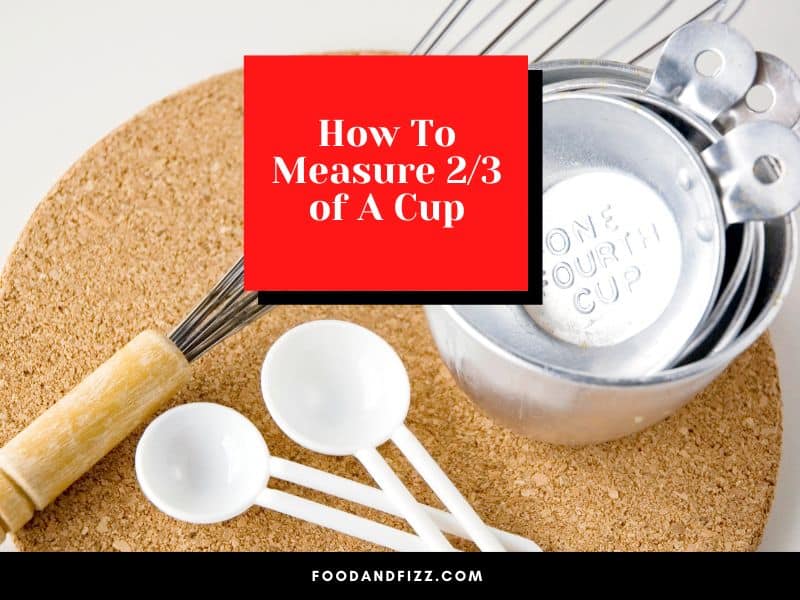
How to Measure 2/3 of A Cup
If your recipe calls for 2/3 cup of an ingredient, it is easy to measure using the following ways.
1. Use a 2/3 cup Measuring Cup
Some measuring cup sets include a 2/3 cup measure. Using this specific measuring cup for measuring 2/3 cup of both your dry and liquid ingredients will ensure that you get an accurate amount for your recipe.
2. Use a 1/3 cup Measuring Cup – Twice
Sometimes your set won’t have a dedicated 2/3 cup measuring cup. If this is the case, you can simply use your 1/3 cup measuring cup and use it twice to get 2/3 cup.
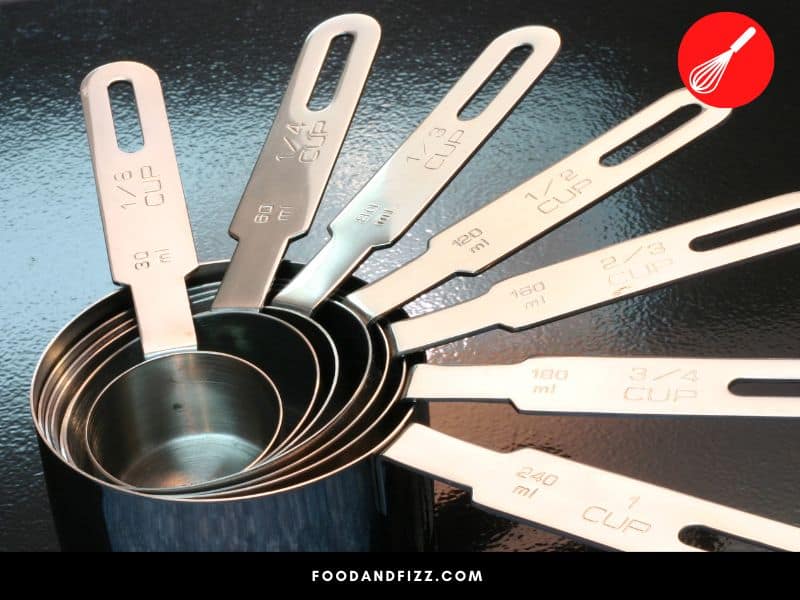
3. Use 1 Cup and Fill It Up 2/3 of the Way
This approach is also something you can do although the OCD baker in me doesn’t really like this as it can be quite imprecise.
You can use the approach for ingredients that would not alter the final product too much. For example, if a cookie recipe calls for 2/3 cups of chocolate chips, a few extra chocolate chips won’t hurt.
However, it might be tricky for something like measuring flour for a chiffon cake, as even just an extra tablespoon of flour can dramatically alter the texture and balance of the ingredients in your recipe.
4. Use Your Measuring Spoons
Another option is to measure using your measuring spoons. According to the USDA, 2/3 cup is equal to 10 tablespoons + 2 teaspoons.
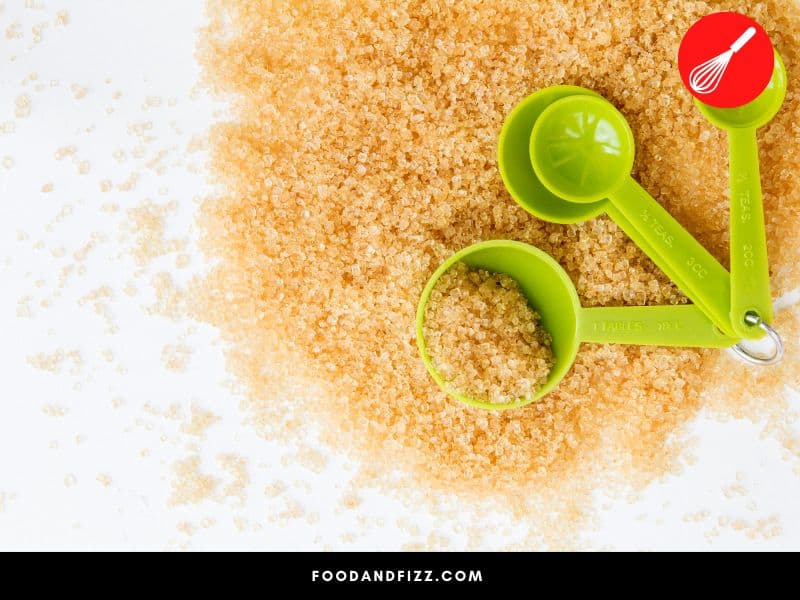
5. Use a Liquid Measuring Cup
Though mostly used for liquid ingredients, liquid measuring cups can also be used for dry ingredients. You can simply fill it up to the 2/3 line marking. Most liquid measuring cups also indicate the equivalent of the specific measurement in fluid oz, in case your recipe is written that way.
WEIGHT EQUIVALENT OF 2/3 CUPS FOR COMMON INGREDIENTS
| Ingredient | Oz | Grams |
| White Sugar | 4.7 | 133 |
| Brown Sugar | 5 | 142 |
| Cocoa Powder | 2 | 28 |
| Confectioner's Sugar | 2.7 | 76 |
| Vegetable Oil | 4.7 | 66 |
| Honey | 8 | 227 |
| Butter | 5.4 | 151 |
| Water ( and most liquids) | 5.4 | 151 |
| Cream | 5.4 | 151 |
| Source: King Arthur Baking |
6. Use a Kitchen Scale
Lastly, if you have a kitchen scale, you can also use that to measure the equivalent of 2/3 cup, however, volume-to-weight conversions can be tricky as it would really depend on the ingredient you are measuring, and even within the same ingredient, such as flour, standards vary depending on the type and brand of flour, and how the value was initially obtained by the author.
Especially for things like flour where how it was measured will have an effect on the resulting amount, it can be tough to determine the exact amount. For example, was the flour scooped and leveled or dipped into the container? Was it sifted prior to measuring?
Things like this can make converting from a volume measurement to a weight measurement a bit tricky. The USDA uses the following standard though: 1 cup of all-purpose flour = 125 grams or 4.4 oz. This means that 2/3 cup of flour would roughly be equivalent to 2.9 oz.
In my opinion, the best thing to do if you want to use weight measurements is to use a recipe that lists the recipe in weight to begin with to ensure the utmost accuracy.
Why Measure Ingredients?
Measuring ingredients when cooking isn’t just for professionals. It offers a lot of benefits even for the average home cook, too.
1. Can help you easily achieve the desired form, flavor, and texture of a recipe
You can probably get away with not measuring anything when you’re making things like egg fried rice, for example, chicken stir fry, or even an icebox cake. However, if you’re making bread or a chocolate cake, measuring ingredients—and measuring them accurately—is crucial for you to achieve the intended texture and flavor.
Good recipes are written in very specific proportions, and measuring allows us to achieve a delicious end product.
2. Gives you a better chance of creating something consistently good
I think we’ve all been there. We made one deliciously amazing dish that one time, and when we wanted to make it again, we couldn’t remember how we made it. We couldn’t replicate it anymore because we didn’t take the time to take note of the specified measurements.
To prevent being a one-hit wonder in the kitchen, measuring and taking down notes while you make your recipes gives you a better chance of creating things that are consistently good. At the very least, it can help you become a better cook because it can give insight as to what ingredients need tweaking the next time you make the dish.
3. Can help you save on ingredients
Measuring your ingredients can help you save money in the long run. Rather than adding a dollop of this ingredient, or a splash of this, or roughly ¾ of a mug of that here, using the right tools can help you actually track how much of a specific ingredient you are using so that you know how long each ingredient will last in your pantry.
You can take into account whether it will be cheaper to buy a smaller package of this next time, or a bigger package of that ingredient, depending on how fast you go through it.
You can better take account of everything by measuring. Especially with the increasing prices of basic commodities now, it would help a lot with savings if you are able to consistently monitor your usage.
As cooking is also an art, we can sometimes “wing it” of course, but in general, if you wish to get consistent results in the kitchen, measuring has its undoubted benefits.
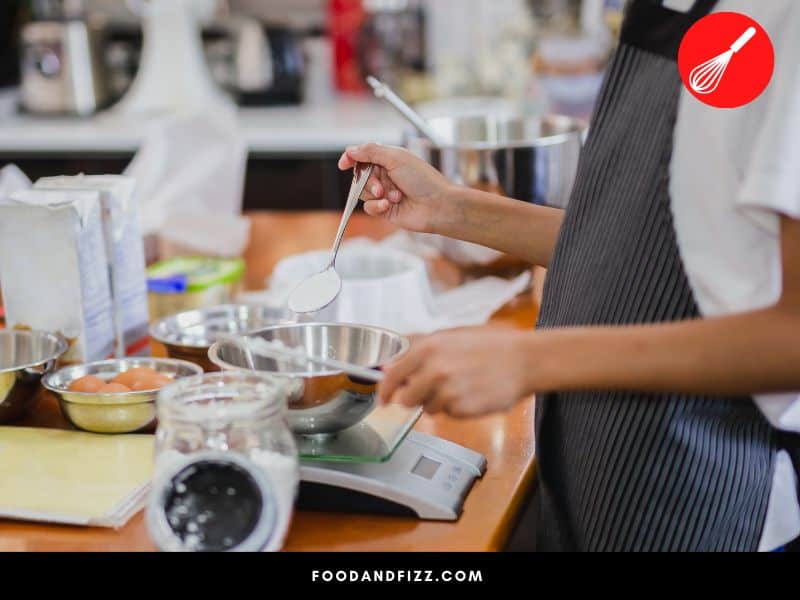
Should You Measure By Weight or By Volume?
Most professional cooks and food experts agree that especially for baking, using weight measurements always leads to better accuracy and more desirable results than measuring by volume.
This is because when we measure by volume, a lot of factors may influence the resulting amount, such as the way the ingredients were placed on the measuring instrument, whether it was dipped or spooned in, packed down or leveled off, as well as the size of the measuring cups themselves.
Oddly enough, measuring cups, depending on the brand, may have slightly different variations on how much ingredients they can hold.
The state of the ingredients can also play a role in the resulting amount if measured by volume. Flour that is not sifted and has clumped together will fit more flour into a one-cup measuring cup vs flour that has been aerated and sifted.
Especially in baking, a little bit of extra flour makes a huge difference, for example in bread or in a cake.
Weighing ingredients using a kitchen scale, by contrast, provides for a more accurate method of measurement as you are weighing only the ingredients themselves, not the empty space it can contain that can add to the volume.
King Arthur Baking notes other advantages of using weight rather than volume in measuring ingredients:
- It saves time and makes for easy cleanup
- Scales are more accurate than measuring cups
- Makes recipes easier to scale up or down rather than working with fractions
- Ensures consistent portion size
Especially if you are producing products on a professional scale, weighing your ingredients allows you to account for the usage of your ingredients better, and allows for more accurate costing of recipes.
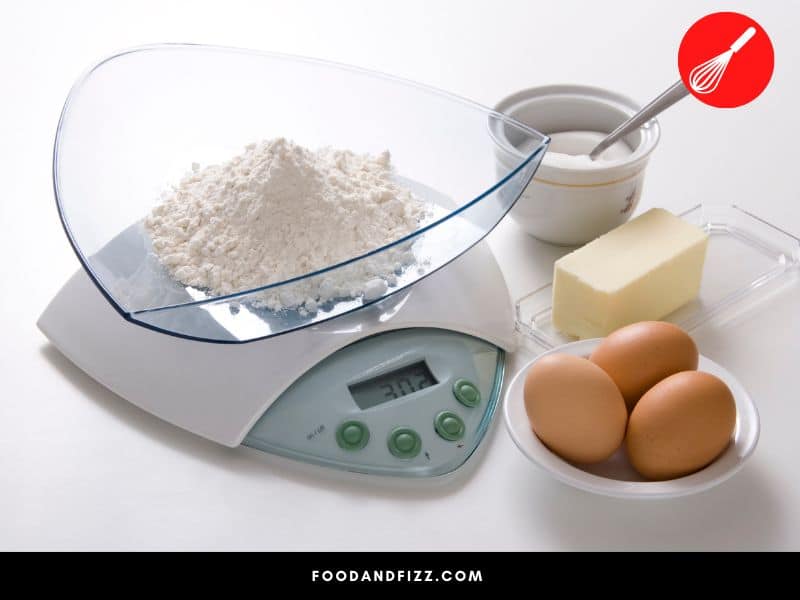
Useful Equivalents to Remember
It helps to know some useful equivalents to aid you in your cooking and baking. Familiarizing yourself with them can make things easier in the kitchen so that if you find that you do not have specific measuring cups, you know that there are other tools you can use to get that right measurement.
Knowing that there are 5 tablespoons and 1 teaspoon in a 1/3 cup measure, for example, can help you navigate your recipe even if for some reason you cannot find your 1/3 cup measure.
USEFUL MEASUREMENT EQUIVALENTS
| 1 Tablespoon | 3 Teaspoons |
| 1/8 Cup | 2 Tablespoons |
| 1/4 Cup | 4 Tablespoons |
| 1/3 Cup | 5 Tablespoons + 1 Teaspoon |
| 2/3 Cup | 10 Tablespoons + 2 Teaspoons |
| 3/4 Cup | 12 Tablespoons |
| 1 Cup | 16 Tablespoons |
| 1 Cup | 8 Fluid Ounces |
| Source: Agricultural Research Service USDA |
Frequently Asked Questions to How To Measure 2/3 of A Cup
How Many Tablespoons is 2/3 Cup?
2/3 cup is equivalent to 10 tablespoons and 2 teaspoons.
How Can I Measure 1/3 Cup?
You can easily measure 1/3 cup by using your measuring spoons. Simply measure out 5 tablespoons and 1 teaspoon, and you have your 1/3 cup measure.
How To Measure 2/3 Cup with 1/3 Cup?
To measure 2/3 cup using a 1/3 cup, simply fill up your 1/3 measuring cup twice.
How Do I Measure 2/3 Cups of Sugar?
To measure 2/3 cups of sugar, spoon the lump-free sugar onto your measuring cup and then use a straight knife or spatula to level off the amount. This ensures that you do not unwittingly add extra sugar to your recipe.
Conclusion to How To Measure 2/3 of A Cup
Even if you do not have a 2/3 measuring cup handy, you can easily measure 2/3 cup by using the other cups in your set, such as the 1/3 cup and 1 cup measure.
You can also use your measuring spoons to arrive at a 2/3 cup amount for your recipe. Knowing some useful and basic kitchen measurement equivalents can help make your cooking experience a whole lot easier.

